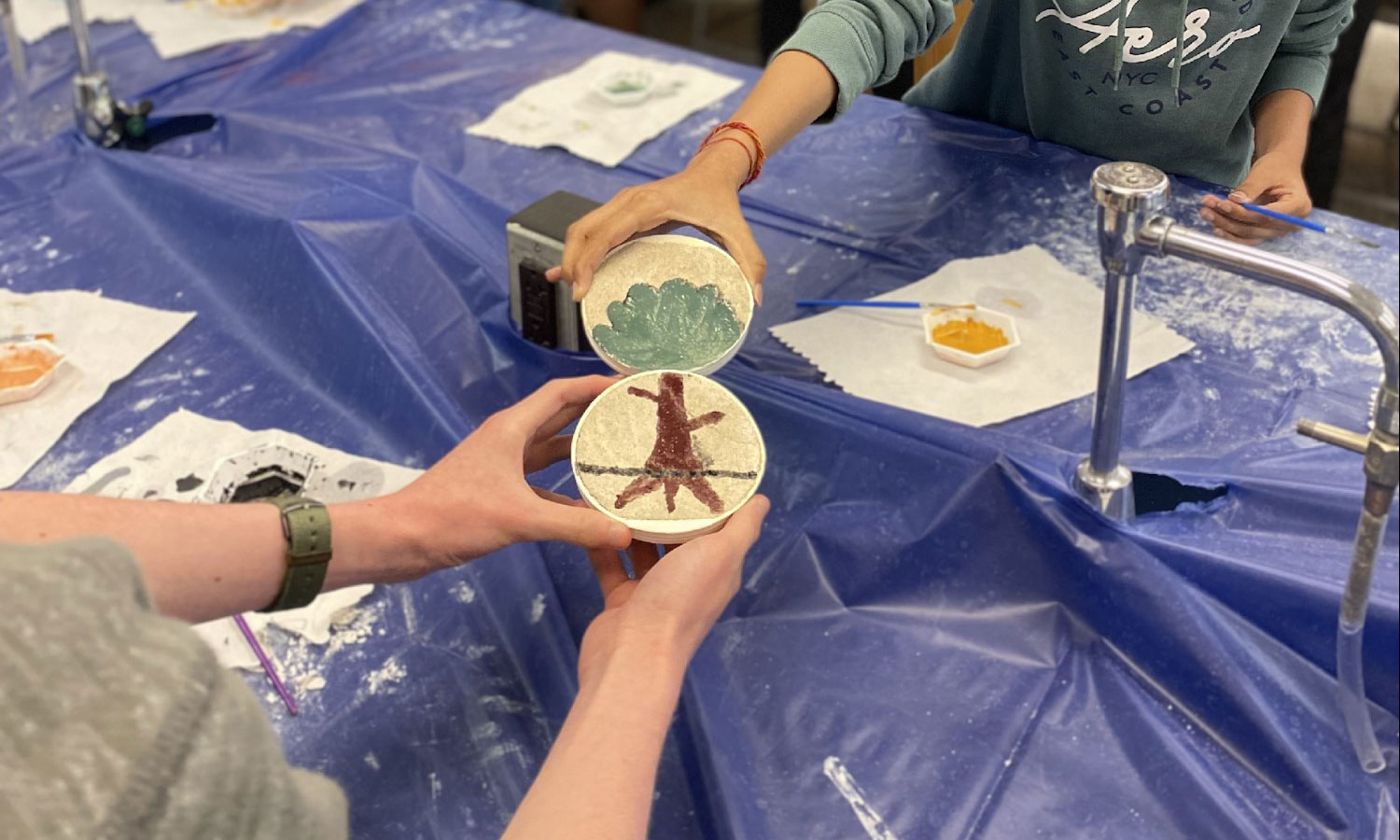In 2021, professor and associate chair of the Department of Chemical and Life Science Engineering (CLSE), James Ferri, Ph.D., began working on an initiative to bring relevant, hands-on chemistry education to high school students.
The goal was to create a transdisciplinary approach to chemistry education that implemented real-world applications for students. Ferri and fellow educator Rachel White, Ph.D., the former Governor's STEM Academy Coordinator at Landstown STEM Academy in the Virginia Beach Public School system (VBCPS), co-authored a curriculum that would intersect chemistry, world history and engineering through the life cycle of Italian frescos.
Creating a fresco may seem like an unassuming process, but there is an important chemical process happening beneath the surface. At its simplest, painting a fresco involves applying pigments to wet plaster. As the plaster dries, a chemical reaction occurs between the plaster, the pigments and the atmospheric carbon dioxide to form calcium carbonate crystals. These crystals create a durable bond, solidifying the pigment and protecting the fresco from fading and peeling over time.
Ferri named this program CReST (Culturally Relevant STEM Education). It utilizes both chemistry and world history test questions from the Virginia Standards of Learning to measure student’s learning outcomes.
“We are enhancing the tangibility of the Standards of Learning,” Ferri said.
The CReST support curriculum, which occurs over six instructional days and approximately three calendar weeks, has three threads: the historical, cultural context, STEM concepts from chemistry and engineering, and experiential learning. Students learn the fresco lifecycle by creating, painting and conserving a fresco using nanotechnology to create a meaningful link between STEM concepts and real world, societal challenges – like cultural heritage conservation.
For students, this meant the opportunity to create and chemically preserve their own fresco.
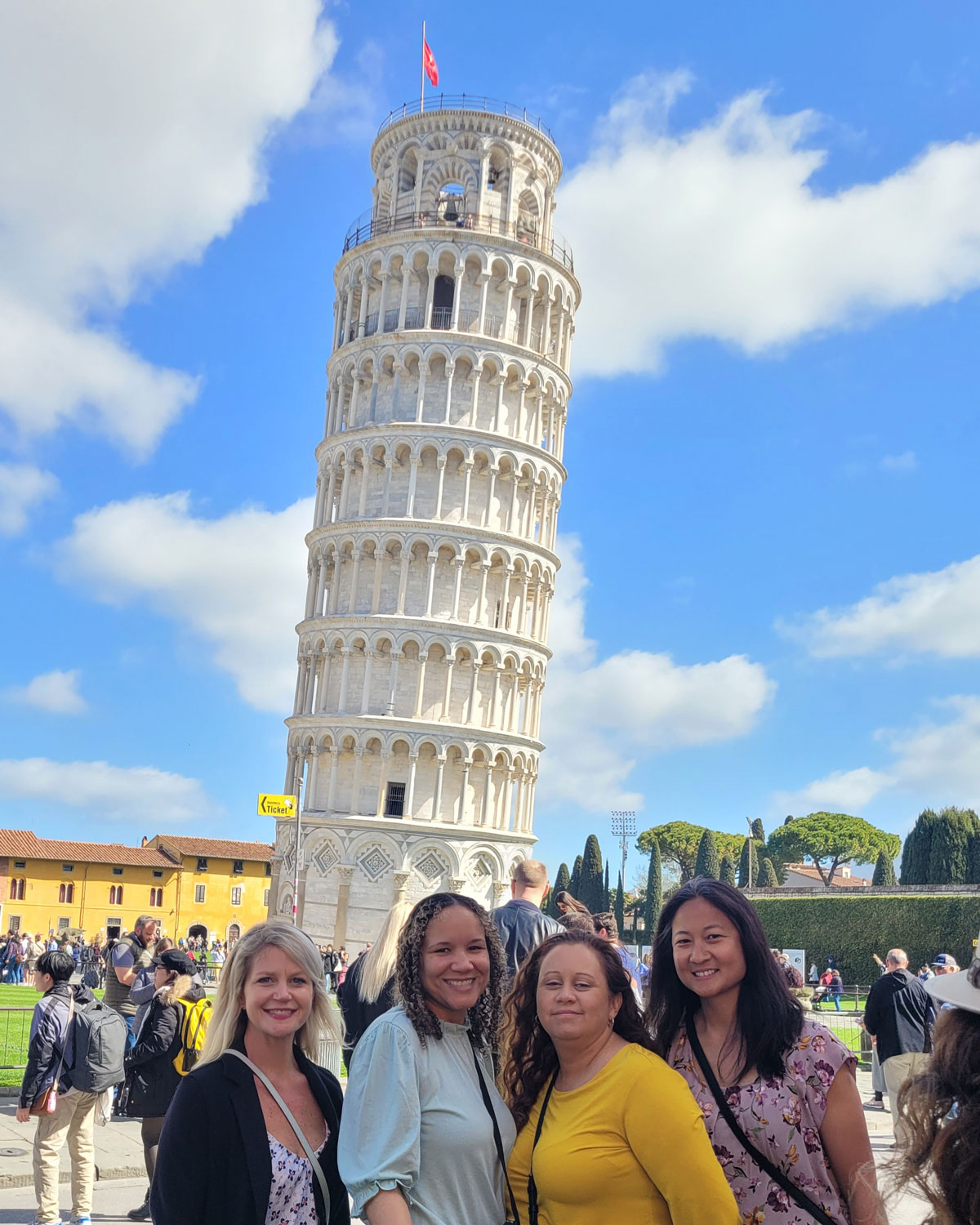
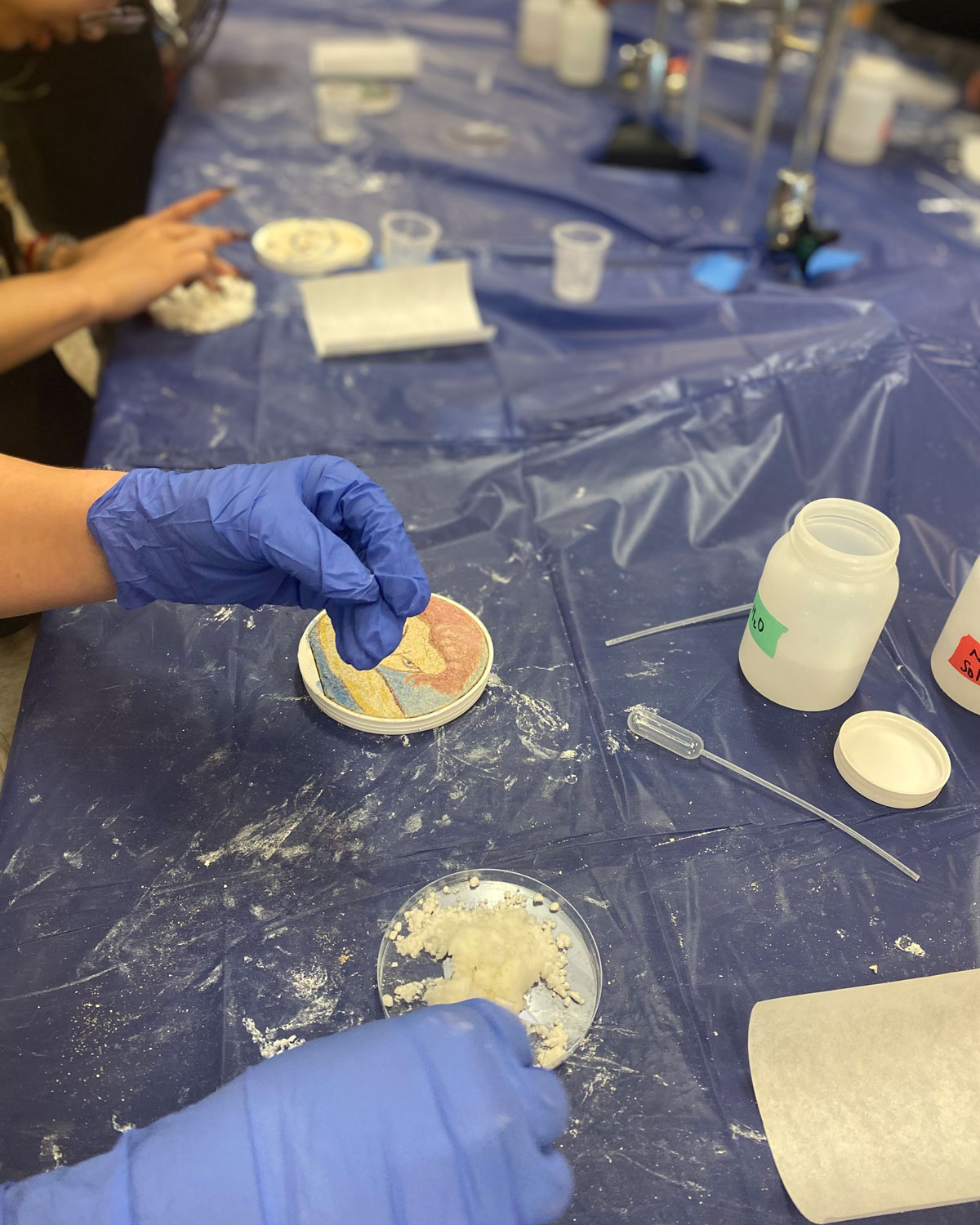
“It was very nice to be able to create something with the background of chemistry knowledge I gained, and it’s not just building robots,” one student said. “Engineering includes working with your hands on stuff that’s chemical and real, it’s not just this preconceived notion of what STEM must be.”
The curriculum was first implemented in the VBCPS and Miami-Dade County Public Schools. Since its inception, over 2,000 high school students have been able to learn the integration of chemistry, engineering and world history with this program. Through this collaboration, Ferri and the VCU College of Engineering chemical and life science engineering department was named a model partner of the Virginia Beach Public School system in 2022.
“We want to introduce students to the impact of STEM, and specifically chemistry and engineering, on societal challenges to help provide relevance to their learning experience,” Ferri said. “The goal is for students to pursue this breadth of education and find a passion for chemistry and engineering that they might not have otherwise.”
After the pilot implementation of the program, Ferri saw an opportunity for a more in-depth experience and planned a professional development experience for the five high school educators in Florence, Italy. This allowed the teachers a once-in-a-lifetime experience in immersive education, the opportunity to see first-hand the power chemistry holds in preserving our world’s history.
The weeklong trip was filled with visits to world-renowned museums and cultural institutions, including a tour of the cultural conservation center labs at the University of Firenze.
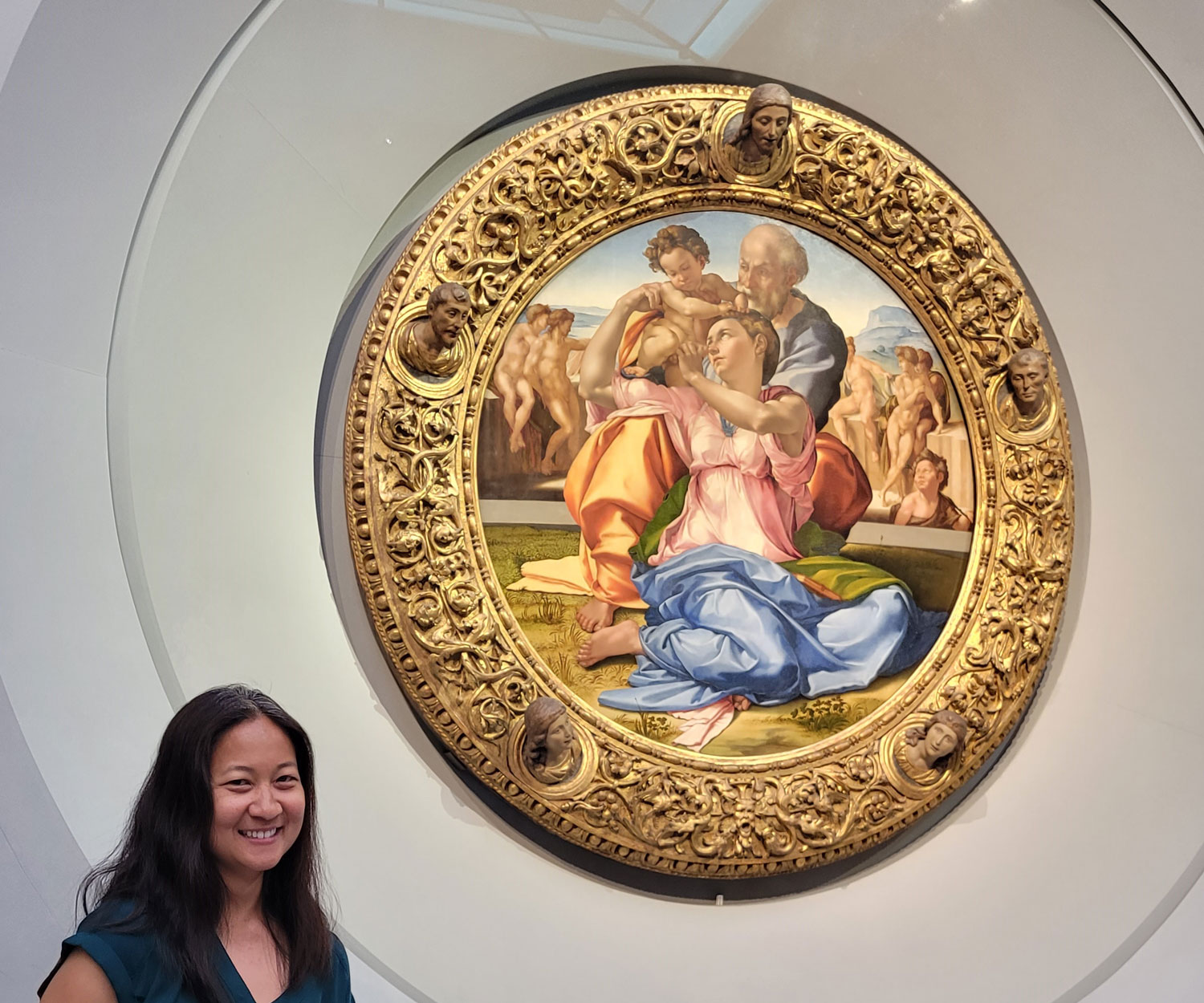
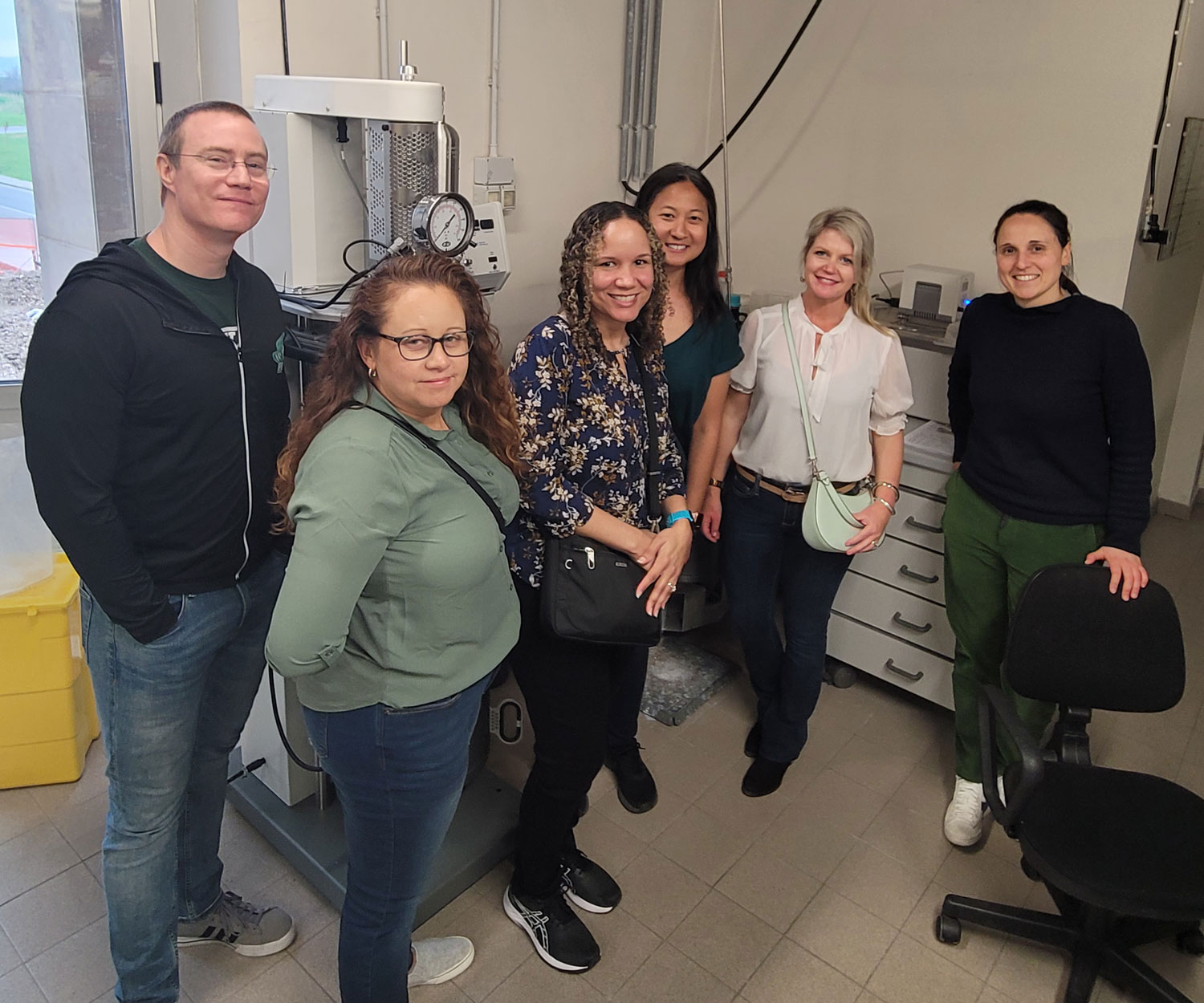
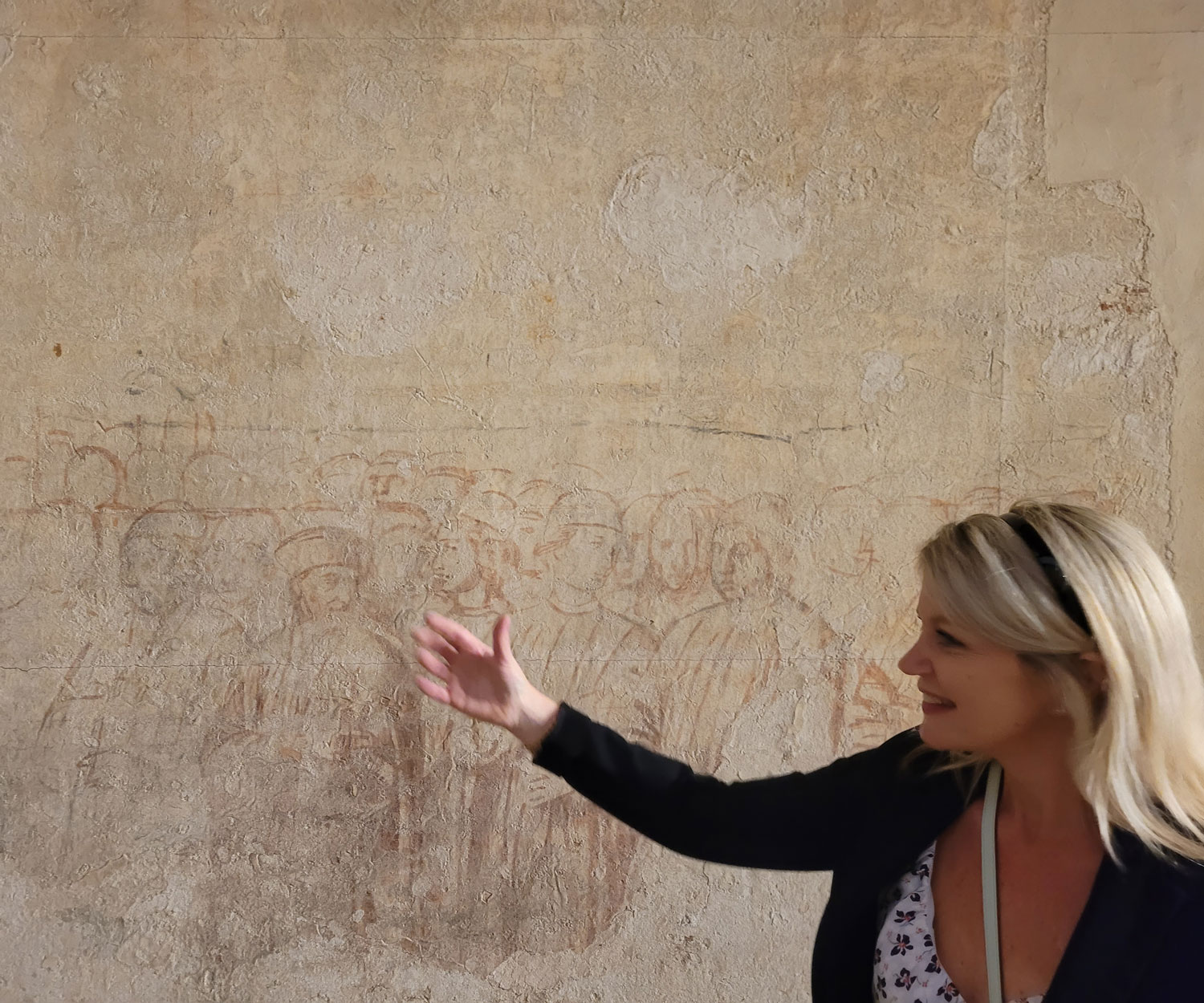
Teachers were able to visit the Museo delle Sinopia (the underpainting of a fresco) at Campo Santo in Pisa and tour the Santa Maria del Fiore Cathedral. These activities account for just a few of the enriching experiences of the trip, enhancing the educator’s ability to understand, appreciate and teach the CReST program.
Following this professional development experience, the teachers saw how their instructional approach shifted when implementing the CReST curriculum in terms of a positive impact on student engagement and understanding of the convergence of disciplines.
“I saw students who probably never thought about taking chemistry before, excited about it,” one history teacher said. “I had other students that thought they were going to struggle, saying, ’I get this’.”
Ferri and White report the CReST pilot program in the journal, Education Sciences. They report significant gains in student academic performance in chemistry and world history. Both students and teachers voiced overwhelmingly positive responses on the efficacy of the program, emphasizing the need for convergent educational strategies to enhance engagement and deepen learning experiences in high school STEM education.
By giving high school students the context and relevance to understand chemistry, they are given the opportunity to matriculate into higher education with a deep, well-rounded passion for the subject. In addition, the transdisciplinary nature of the program prompts the students to think about the subject in new or abstract ways.
“Does life imitate art, or does art imitate life? Does chemistry serve culture, or does culture serve chemistry? In a project like this, you can easily find yourself arguing both sides of it almost continuously,” Ferri said. “CReST highlights the authentic partnership and interplay between culture and science.”
The Department of Chemical and Life Science Engineering provides undergraduate and graduate students with the opportunity to perform real-world research as soon as they enroll. From delving into the intricacies of pharmaceutical manufacturing to exploring the effects of climate change through heat studies, our students pursue a diverse range of cutting-edge research topics. Browse videos and recent news from the Department of Chemical and Life Science Engineering to discover how the College of Engineering at Virginia Commonwealth University prepares the next generation of scientists and engineers for the challenges of the future.
